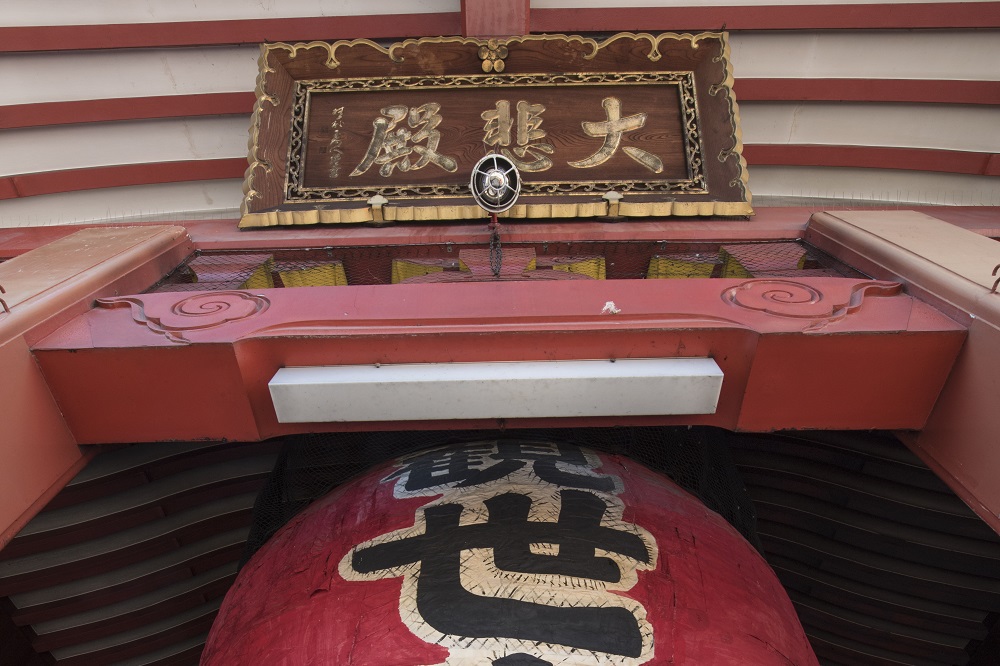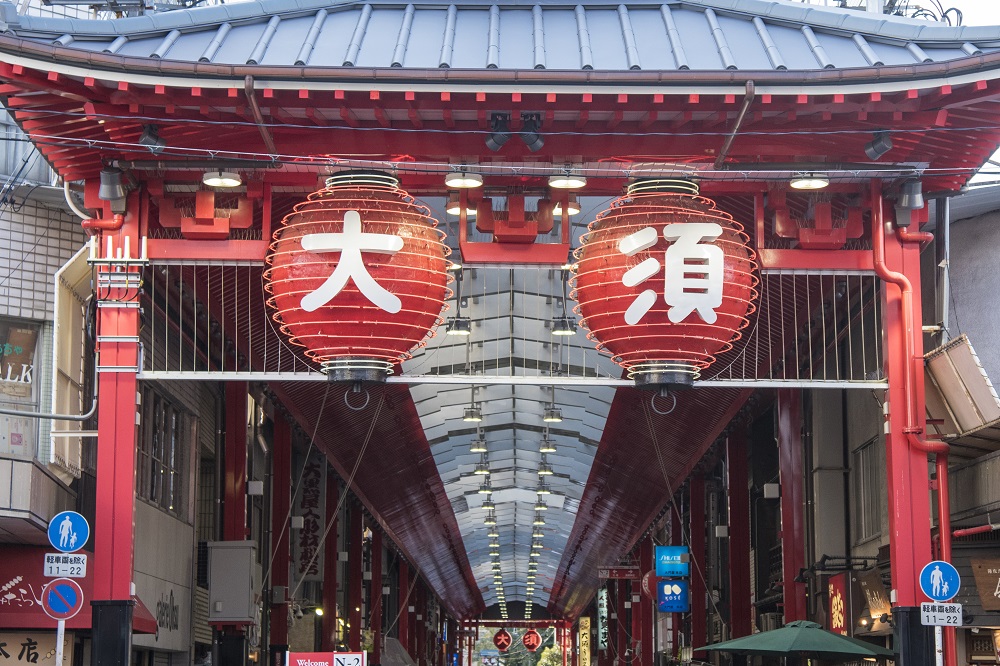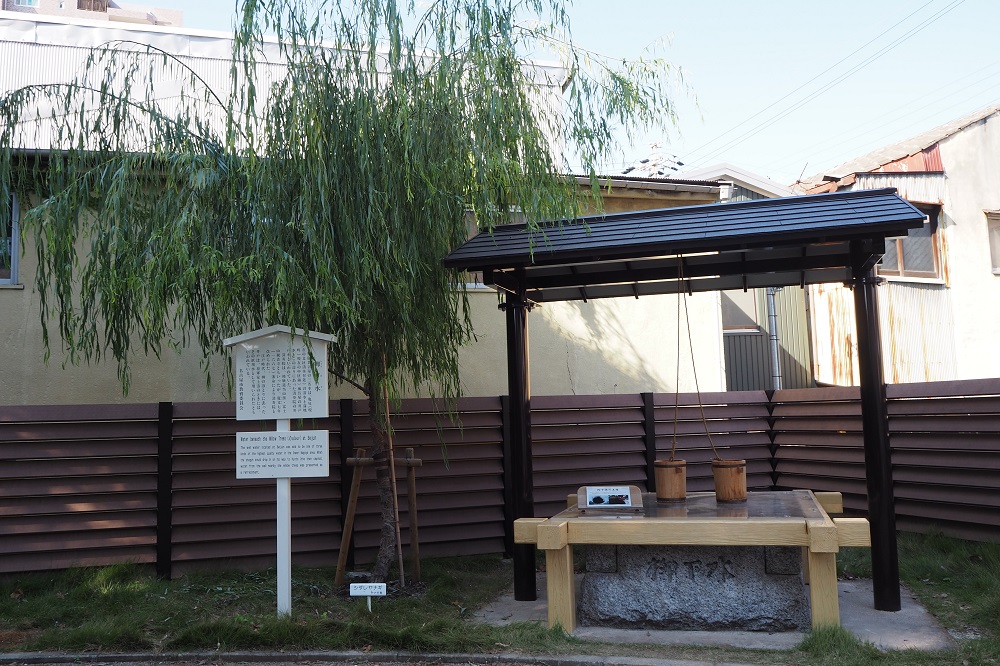Osu Kannon Temple / 大須観音 (Aichi)
About Osu Kannon [Temple]
Osu Kannon [Temple] is one of the three most prestigious "Kannon" [Bodhisattva of Mercy] sacred sites in Japan, along with "Senso-ji" [Asakusa Kannon] in Tokyo and Tsu Kannon in Mie Prefecture. Founded by "Noshin-Shonin" in 1324, the principal image of "Kannon" [wooden statue carved by Kobo Daishi (Kukai), Buddhist monk] is enshrined at the Main Temple.
Osu Kannon, located in the heart of Nagoya City, welcomes numerous persons every year. On "Setsubun", February 3rd, festival is held to welcome spring, a parade of "Shichifukujin" [The Seven Deities of Good Fortune] on a "Takarabune" [Treasure Ship] float attracts crowds.

©(公財)名古屋コンベンションビュロー
Osu Kannon [Temple] was originally built in Osu-go, Nagaoka, Owari [present day: Osu, Hashima City, Gifu Prefecture] by Noshin-Shonin. On the founding of the temple, it is said that Noshin-Shonin shut himself up at the Ise Jingu for one hundred days to pray to be told which "Kannon" will be the most gracious for persons to be given salvation and receive blessings to be enriched at the temple. One night, his prayer was finally received by the "Kami" [deity] and was told that "Kanzeon" [Avalokitesvara] is the most gracious, then a wooden sculpture of "Kanzeon Kannon" was carved by "Kobo Daishi" [Kukai] and was passed on to "Osu Kannnon” [Temple].
Over the years, "The Age of the Warring States" started, and Oda Nobunaga has donated 500 of his temple estates and Tokugawa Ieyasu relocated the temple to restore the City of Nagoya.

©(公財)名古屋コンベンションビュロー
The Osu Kannon [Temple] district flourished when the temple was replaced in 1612. Before the replacement of the temple, the center of Owari region used to be the Kiyosu Castle, the residence of Oda Nobunaga, and the surrounding castle town. When Tokugawa Ieyasu decided to construct a castle in Nagoya, everything was replaced out of Kiyosu. Amid this great transition, the area where Osu Kannon [Temple] is currently situated was designated a place where many shrines and temples would be concentrated, and after Osu Kannon Temple was relocated, the area developed as "Monzen-nakamachi" [Temple Town].
Today, this area is renowned for numerous stores selling Buddhist altars and other related goods, and the traditions and techniques cultivated to date are strongly preserved.

©(公財)名古屋コンベンションビュロー
"Osu Shotengai" [Osu Shopping Arcade] has prospered along with Nagoya and is still a hive of activity to this date. "Osu Shotengai" [Osu Shopping Arcade] consists of eight streets, starting with "Osu Kannon Temple Street", with about 1,200 retailers on the streets, from home electrical appliances, vintage clothing, to food and drinks. In the late 1970s, major home appliance retailers and computer stores started to open their doors in "Osu Shotengai" [Osu Shopping Arcade] and became known as one of the three largest electronic towns in Japan. Today, numerous retailers are selling products from overseas, and restaurants serve international dishes, which is why Osu earned a reputation of a cosmopolitan melting pot of culture, fashion, and gourmet. The sheer diversity and inclusive nature of the town, where all nationalities, generations and genders coexist, has led to dubbing it "Gottani [mixed pot] Shotengai" [shopping arcade].
Getting there and around
by Nagoya City Subway
Take the Tsurumai Line [Light Blue Line] on Nagoya City Subway and disembark at Osu Kannon Station, take the Exit No. 2.
by Nagoya City Bus
Take the No. 18 City Bus bound for Meitetsu Jingumae from Nagoya Station.
Disembark at the Osu Bus Stop.
Recommendations
Osu Summer Festival / 大須夏祭り
"Osu Summer Festival" is one of the major events at Osu Kannon Temple and Osu Shotengai [Osu Shopping Arcade] held for one weekend between late July and early August annually. Those two days are jam-packed with ultimate forms of entertainment, including Osu Taiko [Japanese Drums], traditional performing arts, a Samba dance to Brazilian music, "Cosplay" parade, live performances by local artists OS★U, concluding with "Bon Odori" [Japanese traditional dance] and Tezutsu Hanabi [hand-held fireworks] performance at night.

Kitanosan Shinpukuji Hoshoin / 北野山真福寺寶生院
"Kitanosan Shinpukuji Hoshoin" is the official name for "Osu Kannon Temple". Residents started to call it "Osu Kannon Temple" and the name soon spread out and then, took root as a term of endearment. Osu Kannon Temple is known as a "power spot" where numerous persons visit and pray for their own happiness or happiness of their family. The temple is believed to offer benefits such as household safety, physical health, business prosperity, academic achievements, etc. Over 500,000 persons visit and pay respect to the temple, especially over the first three days of the New Year.

©(公財)名古屋コンベンションビュロー
Ryukasui / 柳下水
One of the three famous waters of Nagoya, "Ryukasui" is the water collected from a well of "Seijyuin Temple", a temple used to stand in Osu. It is said to have been used by the Shogun as drinking water during their pilgrimages to Kyoto, back in the Edo Era. There was once a plan to demolish the well, in line with development of the area, but due to the strong requests from the locals, it was relocated to Nagonoyama Kofun Park, which lies very close to "Osu Kannon Temple".

Unique Local Experiences
Located close to Osu Kannon Temple, Miwa Shrine is known as a destiny "matchmaking" shrine. The shrine houses the "Happy-Go-Lucky Stone Bunny" and petting the Bunny is said to bring luck and happiness. The wooden "Ema" (plaque to write wishes) are bunny shaped, unique to this shrine, making Miwa Shrine popular among ladies. Another highlight of the shrine is the ruins of the archery range of the Owari Tokugawa Clan where the "Toshiya" (Japanese long-range archery exhibition contest) training took place.

Travel Recommendations
Osu Kannon Temple and Osu Shotengai [Shopping Arcade] are within walking distance from Sakae. Having numbers of hotels and other accommodation facilities along with great access to subway lines and bus routes, Sakae is the perfect base for sightseeing in Nagoya. Sakae is the shopping and entertainment district of Nagoya, but when the sun goes down, a lively crowd emanates completely different vibe to that of the daytime. Sakae is an ideal area to stay and explore the Osu district on foot.
Accommodations
ANA CROWNE PLAZA HOTEL GRAND COURT NAGOYA / ANAクラウンプラザホテルグランコート名古屋 (Aichi)
1-1-1 Kanayama-cho, Naka-ku, Nagoya, Aichi
ANA CROWNE PLAZA HOTEL GRAND COURT NAGOYA is located just a short stroll away from Kanayama Station, the second hub station of Aichi Prefecture following Nagoya Station. The hotel is conveniently located just 5 minutes from Nagoya Station by train an....

